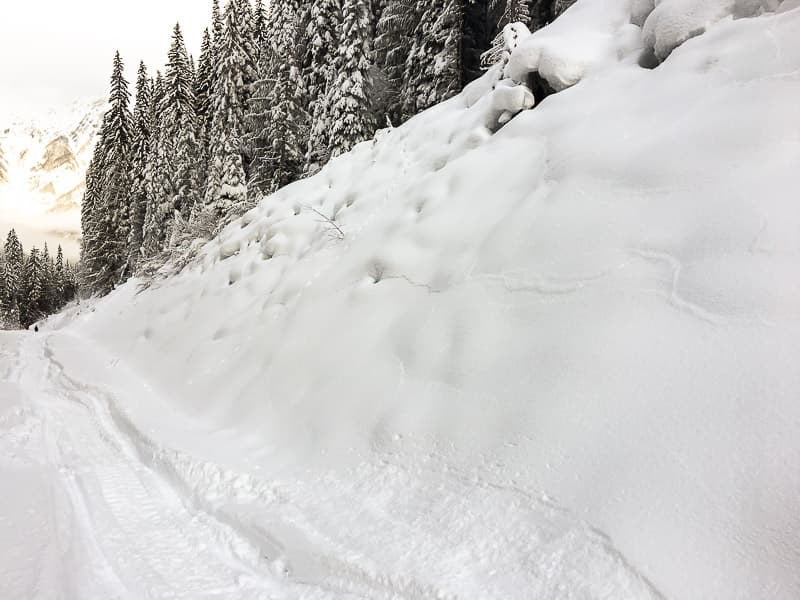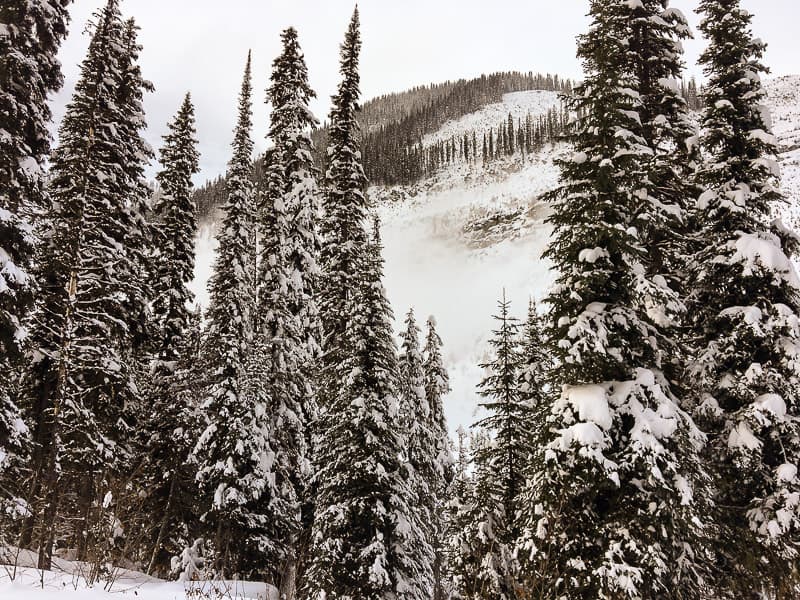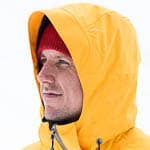Avalanche Warning Signs Turned Us Around
I was out riding with my pals on Sunday. It was shaping up to be a beautiful day. The snow was soft and deep, but settled enough for good traction. We were breaking trail into a rarely visited zone. That’s why it sucked when we made the decision to pull the pin and turn around. But it wasn’t just our gut instinct telling us to do so, there were plenty of avalanche warning signs.
Avalanche Warning Signs Turned Us Around–Not Just A Gut Feeling
It was after we had passed through an upper cutblock that we saw the first signs of instability. Before that there hadn’t even been that much snow down below 1100m, but what was there was settled and still soft. We knew there were layers of unstable surface hoar lurking beneath. A little surprisingly, none of the “usual customer” slide paths that we had already crossed by that time had ran yet this year. Everything was looking pretty good for the day.
Avalanche Bulletin and the Conditions
The weekend before, the Avalanche Canada bulletin had forecasted “High, High, High” avalanche danger across most of the mountains of Western Canada. There had also been a Special Public Avalanche Warning issued to promote the message to the hordes of weekend recreationalists. I had decided to stay home instead of venturing out there.
However, by this weekend things had settled somewhat, and there had been less snow throughout the week. Reports of a reactive snowpack were still rolling in, but Avalanche Canada had downgraded the forecast to “Considerable, Considerable, Considerable” for the nearby Purcell Range, which was a little reassuring. Digging deeper into the report however, there was mention of avalanche activity on three reactive layers down as deep as 100cm plus.
Itching to Get Out and Ride
For one of my riding pals on Sunday, it was to be his last day riding this winter. He was off to Manitoba for work in the morning. So you can imagine his desire to get up into that alpine and get shredding was strong. The other friend, a busy husband and dad of two young ‘uns, was also looking forward to a rare free day up in the mountains. And for myself, I’m always up for a rip. The drive to keep going was there.
Shooting Cracks and Settlements
We first noticed avalanche warning signs as we moved past the cutblock and proceeded along a road through the forest at around 1500m. The lead rider had stopped to let us know that he had noticed the willows and aspens along the road “jiggling” as he approached them—a sure sign of settlements in the snowpack.
We proceeded a little farther along the road. Shooting cracks in the snow along the top of the road cutbank to our left began to form consistently as the snowpack settled. At one point, a 10m long stretch of cutbank slid down into the ditch, well ahead of the first rider. Now, we knew from the bulletin that a surface hoar layer from earlier in January was quite reactive at this elevation. Since the cutbank was small and we weren’t overly exposed, we talked and decided to go a little farther to see if we could safely get above a possible band of instability.

Shooting cracks along the top of the cutbank consistently formed ahead of the first rider in the 1500-1800 meter range.
Remote Avalanches
We spaced out to cross the runout of a couple of bigger avalanche paths—one-at-a-time—with no incident. However, as we pulled up to a safe spot to regroup, several avalanches were triggered across the valley. There were about three or four small avalanches that were triggered by us from a distance of a couple hundred meters away. They ran separately but in succession, and the largest was perhaps a class 2-2.5 avalanche that ran all the way down into the creek at the valley bottom, growing in size as it did so.

I didn’t quite get my camera out in time, but the dust from a powder cloud can still be seen hanging in the air here. The avalanche started at the middle cliff band, and propagated up and over the upper band of trees.
Signs, Gut Feelings and Decision Time
To see multiple avalanches initiated in domino fashion, triggered by us from a long ways away was unsettling. I think at that point we were receiving a strong message from the mountains—it wasn’t just a gut feeling by any means. We knew that if we wanted to continue to our chosen area for the day, we would need to pass directly under a stretch of exposure that was very similar in size, aspect and slope angle to what we had just witnessed slide. It didn’t seem like a good idea.
So—with at least a little disappointment—we decided to turn around, but stay positive and find something else fun to do. Fortunately, down below there were some no-angle flats, well away from any avalanche runouts. We spent the day emptying our tanks jumping drifts, cruising through trees and exploring.
That’s one of the great things about riding a snowmobile! Unlike skiing and snowboarding, slopes aren’t required for a good time. If you have the discipline to change your plans when the conditions aren’t right, you can still go have a safe and fun time riding the mountains. I’m glad we did.
– PG



